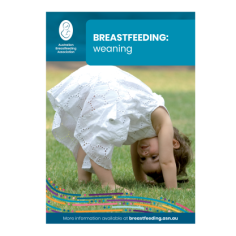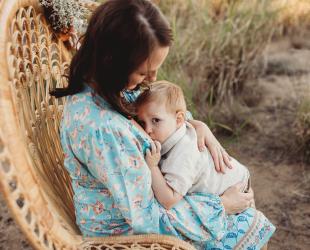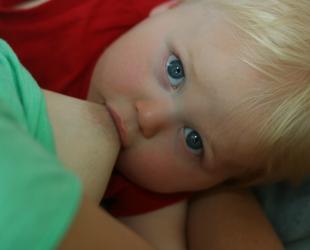How you wean your child will depend on their age and how quickly you want to stop breastfeeding

Weaning means gradually reducing the number of feeds your baby or child has until they no longer need or want to breastfeed.
How you approach weaning will depend on your child’s age and how quickly you want to stop. For many families, weaning is a gentle, flexible process that gives everyone time to adjust.
Weaning takes time
If you’ve been feeding for a while, you’ll know that your breasts don’t stop making milk just because you stop feeding your baby. If you need to stop feeding quickly, you will need to take steps to reduce your supply.
Weaning slowly gives your body and your child time to adjust, helps avoid overfull breasts, and reduces the risk of mastitis. Many parents find that slow weaning is easier for everyone. It allows for flexibility if your child gets sick or needs extra comfort, and you can always go back to more breastfeeds if needed.
However, if you need to wean quickly, you may need a different approach.
Do I need to replace the breastfeeds?
Whether you replace breastfeeds with formula, cows' milk or water will depend on your child’s age and what else they’re eating and drinking. Australian guidelines recommend:
- Babies under 12 months need breastfeeds replaced with formula.1 Your child health nurse can help with advice.
- Children over 12 months can have cows' milk as a drink. Toddler formulas aren’t recommended2 or needed.
The World Health Organization says either formula or pasteurised animal milks (like cows' milk) can be used from 6 months if a baby is no longer breastfed.3
Replacement feeds can be offered in a bottle or a cup.
Ways to approach weaning
- Drop one breastfeed at a time: Start with the feed that’s most difficult, least needed or most convenient for you. Wait a few days before dropping the next feed, giving your breasts and your child time to adjust.
- Reduce the amount at each feed: For babies under 6 months, offer formula before breastfeeds. Your child health nurse can advise you on amounts. For older babies offer solids and other drinks first, then finish with a breastfeed if needed.
- Encouraging weaning gently: Offer one breast per feed, give plenty of other drinks and offer your baby a dummy for extra sucking if they need it. Try feeding your baby according to a fixed routine, if you can.
- Watch for signs of breast inflammation: If your breasts become very full, hand express or use a breast pump until you’re comfortable. Express only what you need so your supply isn’t built up again. Check your breasts daily for lumps, soreness or redness and treat any signs early to avoid mastitis.
Your baby or child may feel unsettled when weaning begins. Make sure you still spend plenty of time together and give them lots of cuddles.
When weaning happens sooner than planned
Sometimes weaning happens before you’re ready, or more quickly than you hoped. It’s normal to feel disappointed or sad when this phase ends. Take time to process your feelings and remember that breastfeeding is just one part of being a loving parent. You and your child can still enjoy closeness and cuddles, knowing you’ve given them a great start.
© Australian Breastfeeding Association October 2025
Read more about weaning
Evidence-led info and practical tips from our Breastfeeding Information Series
Breastfeeding: weaning

- National Health and Medical Research Council. (2013). Australian dietary guidelines. https://www.nhmrc.gov.au/adg
- National Health and Medical Research Council. (2012). Infant feeding guidelines: Information for health workers. https://www.nhmrc.gov.au/about-us/publications/ infant-feeding-guidelines-information-health-workers
- World Health Organization. (2023). WHO guideline for complementary feeding of infants and young children 6–23 months of age. https://www.who.int/publications/i/item/9789240081864



